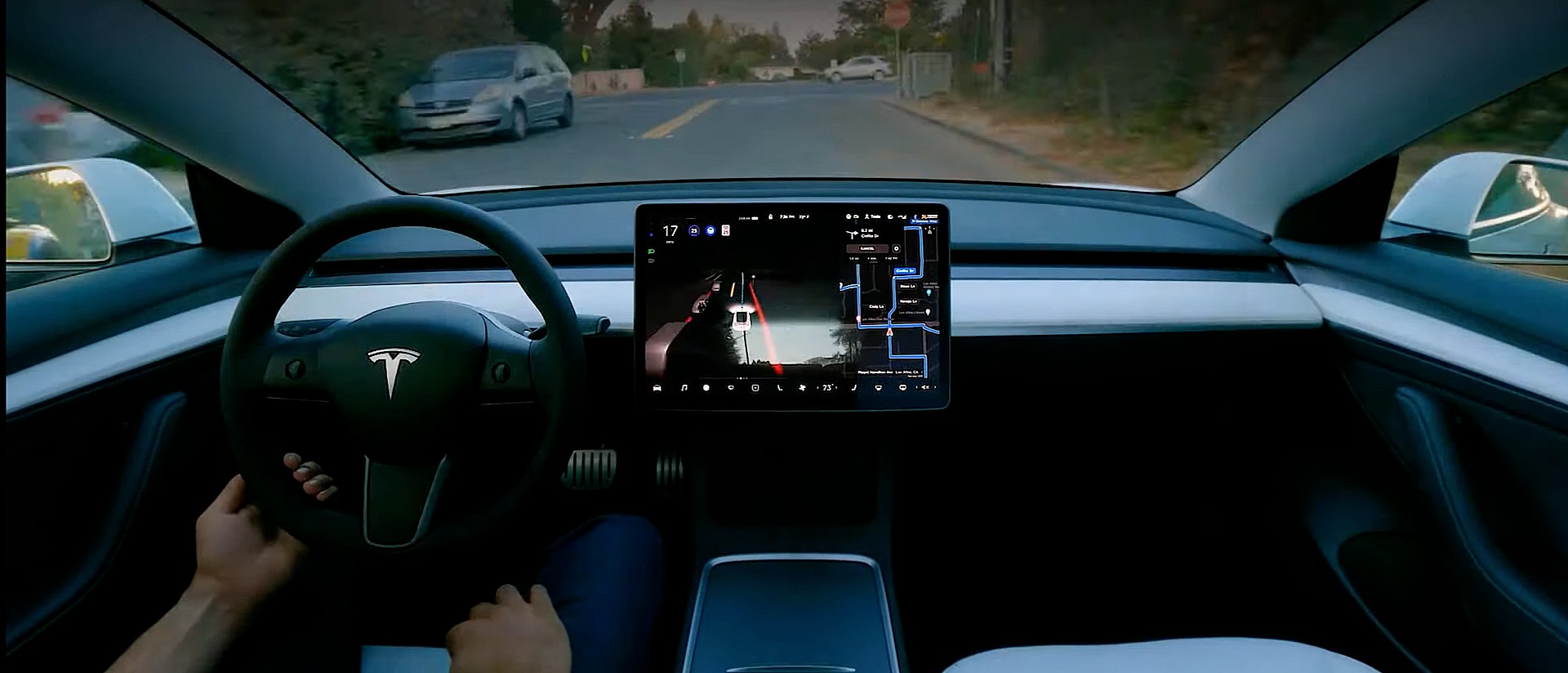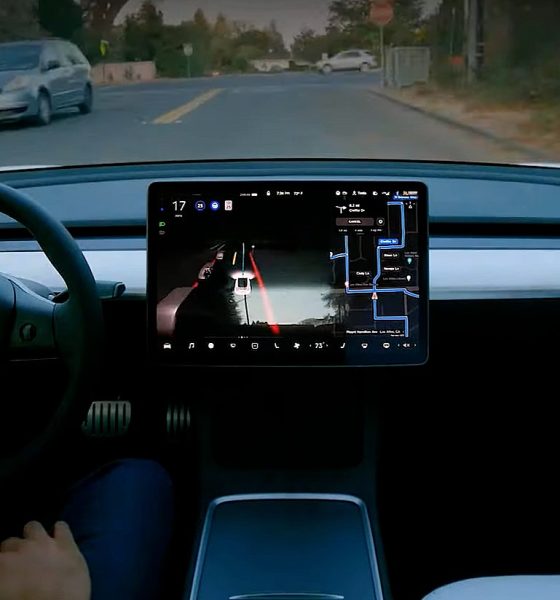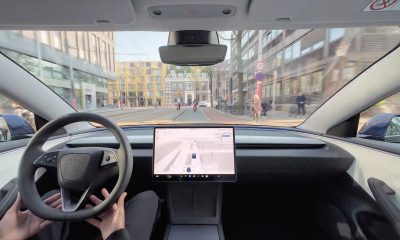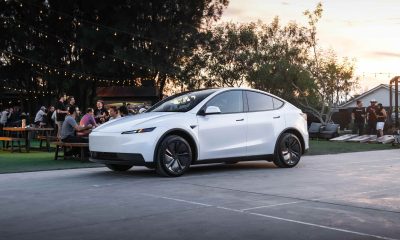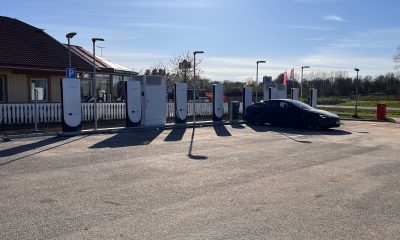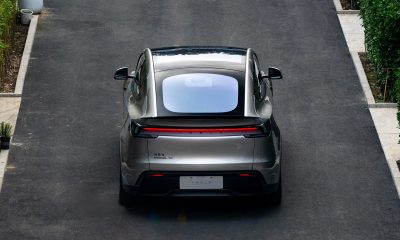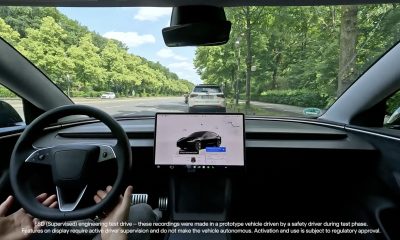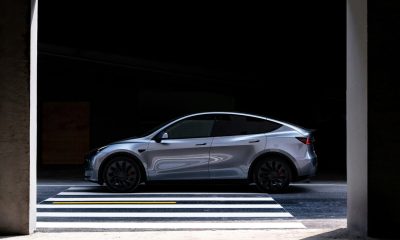This is a preview from our weekly newsletter. Each week I go ‘Beyond the News’ and handcraft a special edition that includes my thoughts on the biggest stories, why it matters, and how it could impact the future.
Earlier this week, NTSB Chief Jennifer Homendy made some disparaging comments regarding Tesla’s use of “Full Self-Driving” to explain its semi-autonomous driving suite. The remarks from Homendy show that Tesla may not have a fair chance when it ultimately comes to proving the effectiveness of its FSD program, especially considering agency officials, who should remain impartial, are already making misdirected comments regarding the name of the suite.
In an interview with the Wall Street Journal, Homendy commented on the company’s use of the phrase “Full Self-Driving.” While Tesla’s FSD suite is admittedly not capable of Level 5 autonomy, the idea for the program is to eventually roll out a fully autonomous driving program for those who choose to invest in the company’s software. However, instead of focusing on the program’s effectiveness and commending Tesla, arguably the leader in self-driving developments, Homendy concentrates on the terminology.
Homendy said Tesla’s use of the term “Full Self-Driving” was “misleading and irresponsible,” despite the company confirming with each driver who buys the capability that the program is not yet fully autonomous. Drivers are explicitly told to remain vigilant and keep their hands on the wheel at all times. It is a requirement to use Autopilot or FSD, and failure to do so can result in being locked in “Autopilot jail” for the duration of your trip. Nobody wants that.
However, despite the way some media outlets and others describe Tesla’s FSD program, the company’s semi-autonomous driving functionalities are extraordinarily safe and among the most complex on the market. Tesla is one of the few companies attempting to solve the riddle that is self-driving, and the only to my knowledge that has chosen not to use LiDAR in its efforts. Additionally, Tesla ditched radar just a few months ago in the Model Y and Model 3, meaning cameras are the only infrastructure the company plans to use to keep its cars moving. Several drivers have reported improvements due to the lack of radar.
These comments regarding FSD and Autopilot are simple: The terminology is not the focus; the facts are. The truth is, Tesla Autopilot recorded one of its safest quarters, according to the most recently released statistics that outlined an accident occurring on Autopilot just once every 4.19 million miles. The national average is 484,000 miles, the NHTSA says.
It isn’t to say that things don’t happen. Accidents on Autopilot and FSD do occur, and the NHTSA is currently probing twelve incidents that have shown Autopilot to be active during an accident. While the conditions and situations vary in each accident, several have already been proven to be the result of driver negligence, including a few that had drivers operating a vehicle without a license or under the influence of alcohol. Now, remind me: When a BMW driver is drunk and crashes into someone, do we blame BMW? I’ll let that rhetorical question sink in.
Of course, Homendy has a Constitutional right to say whatever is on her mind. It is perfectly reasonable to be skeptical of self-driving systems. I’ll admit, the first time I experienced one, I was not a fan, but it wasn’t because I didn’t trust it. It was because I was familiar with controlling a vehicle and not having it manage things for me. However, just like anything else, I adjusted and got used to the idea, eventually becoming accustomed to the new feelings and sensations of having my car assist me in navigating to my destination.
To me, it is simply unfortunate for an NTSB official to claim that Tesla “has clearly misled numerous people to misuse and abuse technology.” One, because it isn’t possible, two, because it would be a massive liability for the company, and three, because Tesla has never maintained that its cars can drive themselves. Tesla has never claimed that its cars can drive themselves, nor has Tesla ever advised a driver to attempt a fully autonomous trek to a destination.
The numerous safety features and additions to the FSD suite have only solidified Tesla’s position as one of the safest car companies out there. With in-cabin cameras to test driver attentiveness and numerous other safety thresholds that drivers must respond to with the correct behaviors, Tesla’s FSD suite and its Autopilot program are among the safest around. It isn’t favorable for NTSB head Homendy to comment in this way, especially as it seems to be detrimental to not only Tesla’s attempts to achieve Level 5 autonomy but the entire self-driving effort as a whole.
A big thanks to our long-time supporters and new subscribers! Thank you.
I use this newsletter to share my thoughts on what is going on in the Tesla world. If you want to talk to me directly, you can email me or reach me on Twitter. I don’t bite, be sure to reach out!
-Joey
News
Tesla Full Self-Driving’s new version officially gets a wider rollout
So far, v14 has introduced a handful of new features and improvements, but the first versions needed refinement before Tesla made an effort to expand the population. It had issues with a brake stutter, but this has been mostly resolved.
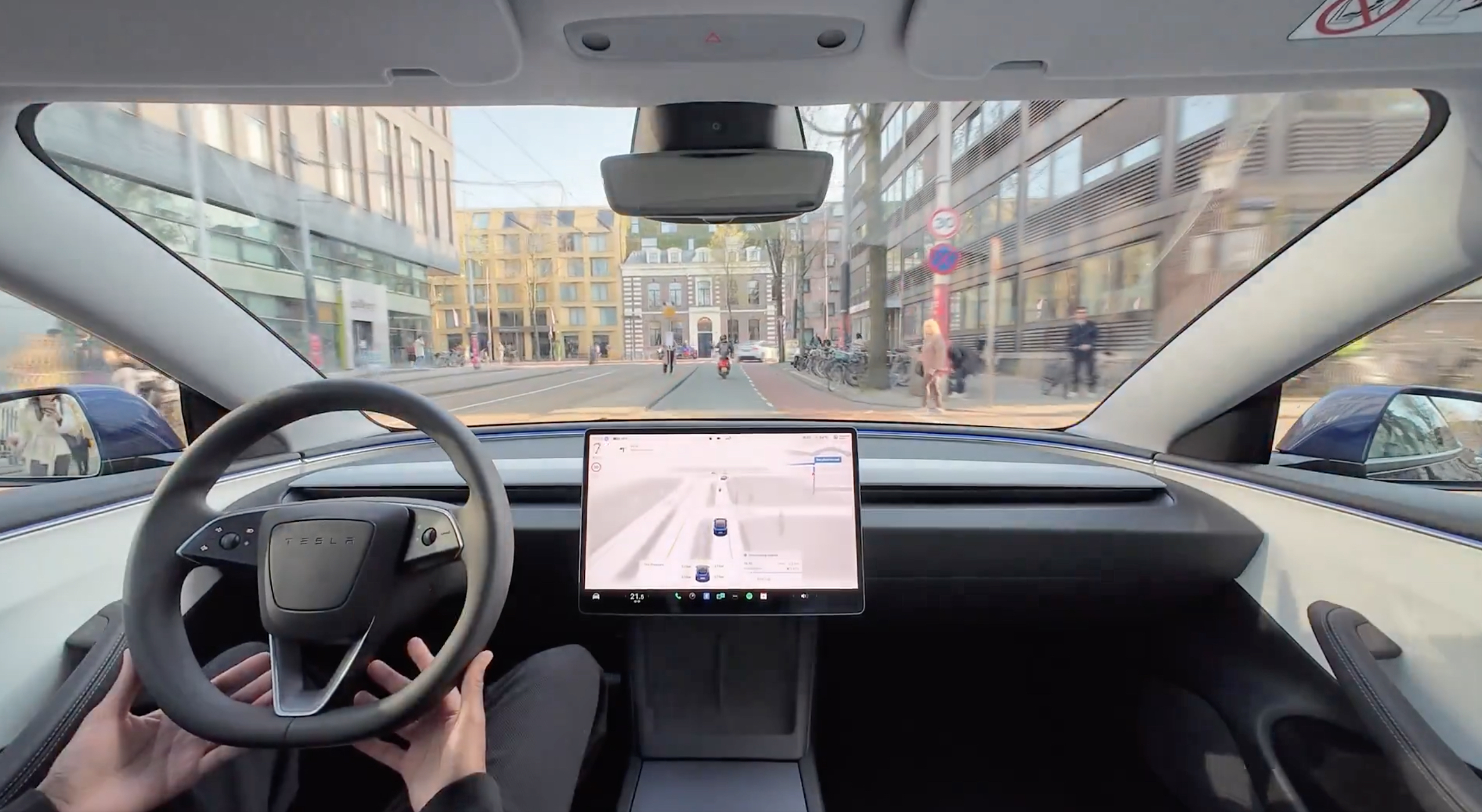
Tesla’s newest Full Self-Driving version is officially rolling out wider to customers outside of the Early Access Program (EAP), in preparation for a total launch of the new v14 suite.
Over the past several weeks, Tesla has been working to refine its new v14 Full Self-Driving (Supervised) in an effort to have it ready for the entire fleet of vehicles in the United States. We are lucky enough to be in the EAP, so we’ve been able to test new features and rollouts first-hand.
So far, v14 has introduced a handful of new features and improvements, but the first versions needed refinement before Tesla made an effort to expand the population. It had issues with a brake stutter, but this has been mostly resolved.
Additionally, the rollout of the new Mad Max Speed Profile has gathered some attention.
🚨 Tesla “Mad Max” testing on FSD v14.1.2
It drives like a human being! Consistent lane changes, keeps up with quicker traffic, very refined
Well done Tesla Team pic.twitter.com/wzTucDhczA
— TESLARATI (@Teslarati) October 19, 2025
Now that Tesla has started rolling out v14.1.3 yesterday to EAP members, the company ultimately decided that it was time to expand the software to more vehicles, as many owners are reporting that they’re receiving it:
We are SOOOO BACK!
v14.1.3 installing on my 2024 Model 3!@WholeMarsBlog pic.twitter.com/uNHOc9fyV8— Joseph (@ScarantinoX) October 20, 2025
Additionally, the suite has started to expand to Model S and Model X vehicles, so this rollout is not exclusive to Model 3 and Model Y:
I did over an hour of driving with FSD v14.1.3 in my Model S tonight and experienced 0 disengagements. First impressions video uploading shortly… pic.twitter.com/aFfmBphAsC
— Dan Burkland (@DBurkland) October 21, 2025
The only issue with this rollout is that it still appears to be missing the Cybertruck, which Tesla was transparent about earlier this month. Although the company planned to release v14 to Cybertrucks by the end of the month, there has been no hint that this is going to happen.
This is already the third iteration of v14 in the past two weeks, indicating that Tesla is truly addressing the shortcomings of past versions and rolling out updates as quickly as possible.
News
Tesla makes crazy move to spur short-term demand in the U.S.
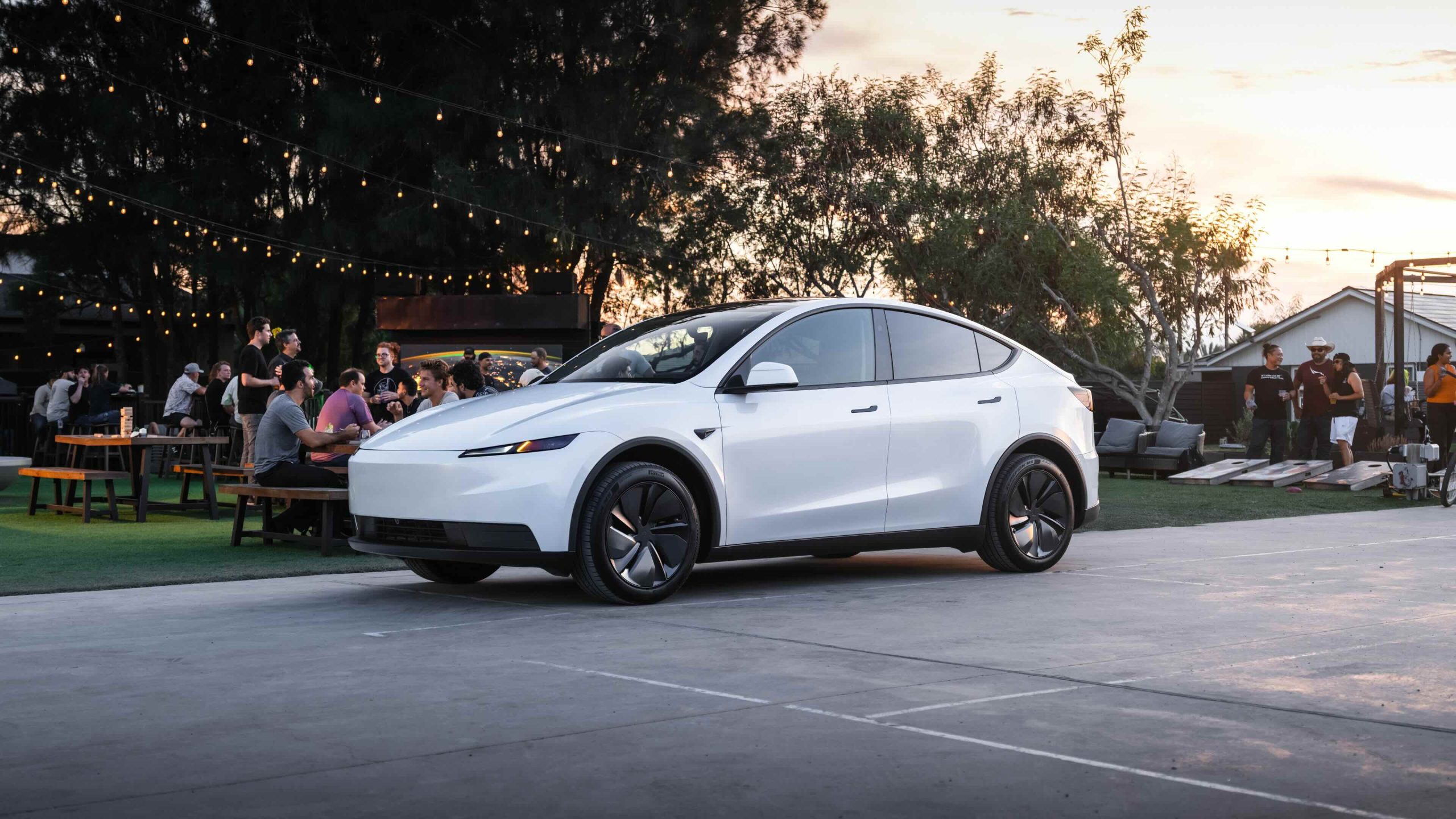
Tesla has made a crazy move with its leasing terms in the United States to spur demand in the short term, as Q4 is moving along quickly.
The move is one that is pretty crazy in terms of the lease price, as one of the deals shows a drop of nearly one-quarter of the previous pricing. These deals are obviously being started to really drive demand over the next week and a half.
Tesla has offered new leasing terms on the Model 3, Model Y, and Cybertruck, cutting lease prices by 23 percent for the Model 3, 15 percent for the Model Y, and 7 percent for the Cybertruck.
New prices on these leases are as follows:
- Tesla Model 3: $329/mo, down from $429 — 23 percent discount
- Tesla Model Y: $449/mo, down from $529 — 15 percent discount
- Tesla Cybertruck: $699/mo, down from $749 — 7 percent discount
The lease terms are $3,000 down, a 36-month lease term, and 10,000 miles per year. Tesla is also showing $0 down lease prices automatically on its website.
For the Model 3, these same terms with $0 down would be $419. The Model Y with $0 down would be $543 a month, and the Cybertruck would be $851 a month.
These terms are also for the entry-level configurations of each vehicle, so for the Model 3, it’s the Model 3 Standard. The Model Y price is for the Model Y Standard, and the Cybertruck is the All-Wheel-Drive.
Tesla launches two new affordable models with ‘Standard’ Model 3, Y offerings
Tesla shows on their website that these lease deals are incredibly short-term and will adjust accordingly on November 1.
Why Tesla is launching these deals for ten days is not necessarily known, but it seems as if the company might be testing demand, as lease deals for the latter half of Q4 could be in the works.
Tesla traditionally launches some pretty tasty deals at the end of each quarter, but this move is somewhat interesting simply because it is not even remotely long-term.
It will be a good test to see if people are more incentivized to wait for these deals now that the $7,500 tax credit has been removed.
News
Tesla Sweden faced with fresh strike from elevator company
Telecom and elevator service providers are the latest to join the widening labor blockade against the EV maker.
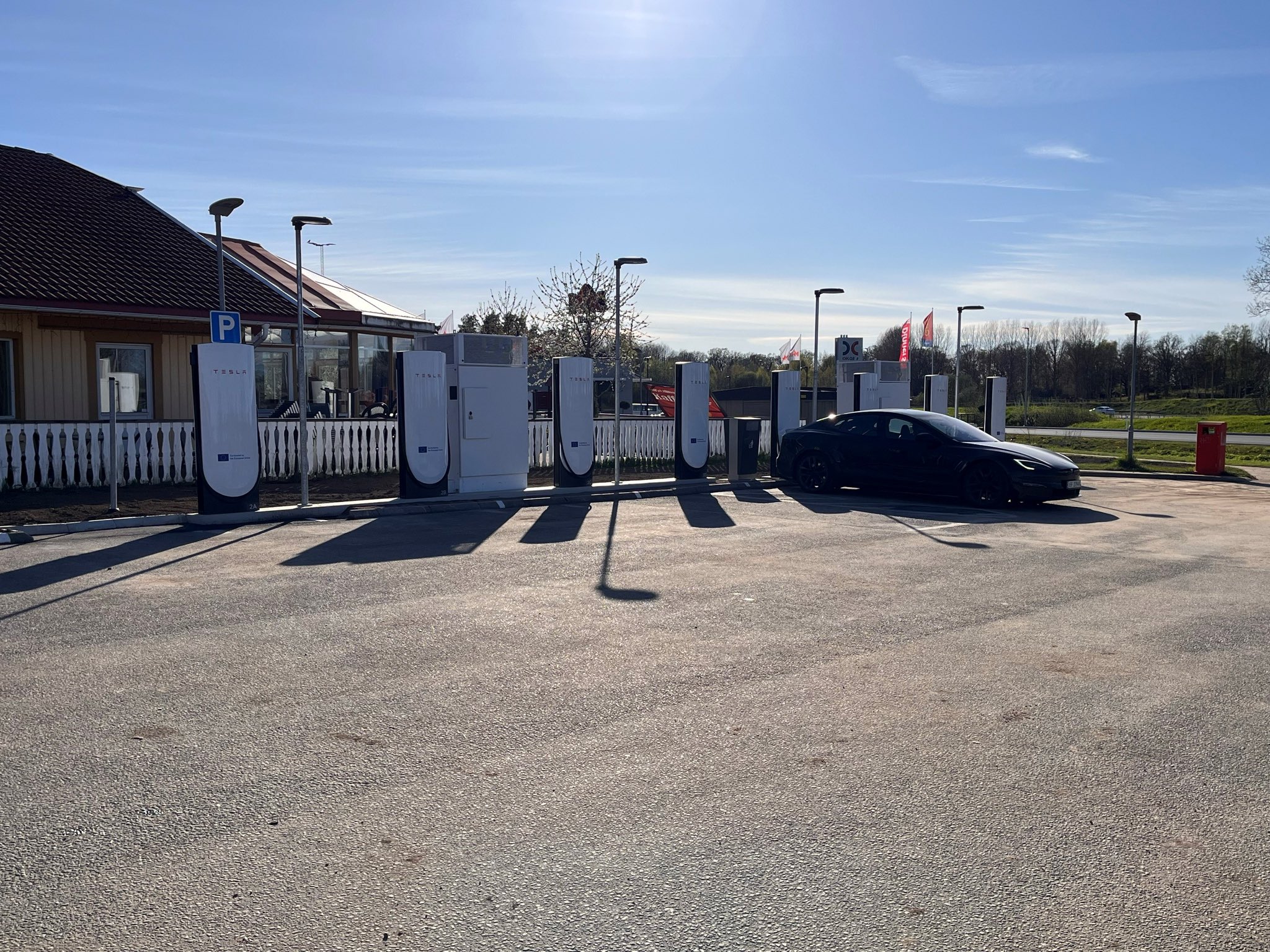
Tesla’s operations in Sweden are facing fresh pressure as multiple unions intensify their long-running dispute against the electric vehicle maker. Industrial groups IF Metall and Seko have announced new blockades affecting elevator maintenance and telecom services, escalating their ongoing conflict with Tesla Sweden.
Work stoppages expand to elevator maintenance
Starting October 29, elevator manufacturer Cibes Kalea Sverige will halt all service and maintenance work at Tesla’s facilities under a full blockade ordered by IF Metall. The union’s move targets elevator service visits, which are typically required four times a year in Sweden. Cibes Kalea employs around 70 workers across six sites in Sweden and provides both passenger and freight elevator systems to clients, including Tesla, as noted in a report from Dagens Arbete.
The industrial action follows months of escalating measures from IF Metall, which has aimed to pressure Tesla into signing a collective bargaining agreement. Since early September, the union has initiated several blockades across Tesla’s Swedish network, including work stoppages involving suppliers like Holtab and Linde Material Handling.
This was despite Sweden’s Mediation Institute throwing in the towel at the unions and Tesla’s conflict. “We have tried in every possible way to get the parties to come closer to each other in a way that allows this conflict to end. But now we have come to the end of the road and have realized that it is just as good to end the case,” Director General Irene Wennemo said.
Telecom workers join expanding blockade
In a separate escalation, Seko, another major Swedish union, announced a strike targeting Tesla’s telecommunications infrastructure. “We are now putting a notice on the telecom area and this means that when it comes to networks, fiber or telephony, for example, we will not help where Tesla needs either service, maintenance or new installation of these parts,” Seko chair Gabriella Lavecchia told Sveriges Radio.
Seko has already initiated blockades against Tesla’s postal service and charging stations. The union expects the telecom blockade to have even broader effects given Tesla’s reliance on connectivity for its charging and digital services. “There aren’t many companies in Sweden today that don’t need telephony, fiber, networks, and I would guess that Tesla needs it more than many others,” Lavecchia said.
With 12 strike notices issued in just a few weeks, the conflict shows no signs of easing as unions continue to coordinate pressure through multiple sectors.
-

 Elon Musk4 days ago
Elon Musk4 days agoSpaceX posts Starship booster feat that’s so nutty, it doesn’t even look real
-

 Elon Musk3 days ago
Elon Musk3 days agoTesla Full Self-Driving gets an offer to be insured for ‘almost free’
-

 News3 days ago
News3 days agoElon Musk confirms Tesla FSD V14.2 will see widespread rollout
-

 News4 days ago
News4 days agoTesla is adding an interesting feature to its centerscreen in a coming update
-

 News6 days ago
News6 days agoTesla launches new interior option for Model Y
-

 News5 days ago
News5 days agoTesla widens rollout of new Full Self-Driving suite to more owners
-

 Elon Musk4 days ago
Elon Musk4 days agoTesla CEO Elon Musk’s $1 trillion pay package hits first adversity from proxy firm
-
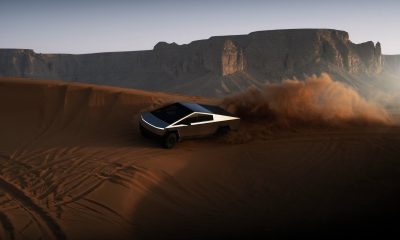
 News6 days ago
News6 days agoTesla makes big move with its Insurance program

